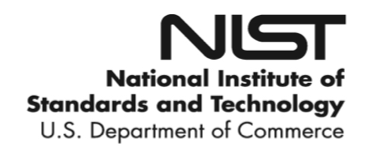5 C3PAO Red Flags
By Sese Bennett
November 14, 2022
In this blog, we discuss 5 C3PAO Red Flags that you should look for when interviewing a prospective C3PAO to perform your CMMC assessment.
Choosing the right Certified Third-Party Assessment Organization (C3PAO) for your CMMC assessment will take effort and time. This will be time and effort well spent if you find the right match and avoid companies that don’t have your best interest in mind
The Good, The Bad, and The Ugly C3PAO?
As the cybersecurity world gears up for CMMC, I was reminded not too long ago by a client, not all companies are the same. This includes how they approach CMMC assessments and what “style” of C3PAO works best for them. While it is true that most companies will perform the assessment correctly, the way they assess can feel like everything from a walk in the park to a root canal. Yes, compatibility of the two companies can make a huge difference. Although a company may have stellar recommendations, their approach and personalities may clash with the established culture of your organization.
But what about the bad eggs? As with any project or initiative your organization takes on, diligence is required with selecting a compatible C3PAO. Differing of opinion on implementation and requirements is common and normally not a showstopper. However, poor business ethics and ineptness are signals of future problems that could be major issues if you are not careful.
So how do you identify these bad eggs before they impact the success of your assessment? Awareness is key. Identification of these 5 C3PAO red flags will help you avoid C3PAO’s (or any other organization for that matter) who’s actions put the success of your CMMC certification efforts at risk.

5 C3PAO RED FLAGS

Red Flag #1 Almost Certified
In the world of CMMC C3PAO’s there is authorized and not authorized. C3PAO’s that have not officially completed the Cyber-AB authorization process cannot solicit business as authorized C3PAO’s. “As good as authorized” or “Almost Authorized” only means one thing – Not Authorized! There are so many things that could happen to delay or even prevent them from becoming authorized. If you make a “gentleman’s agreement” based on the expectation they will someday be authorized, this could leave you high and dry and place you in the back of the assessment queue.

Red Flag #2 No Action Plan
If your interview with a potential C3PAO leaves you with more questions than answers, that C3PAO may not have an adequate plan to execute your assessment. Coming up with a plan on the spot is not reassuring and could delay your assessment. Experienced C3PAO’s should be confident on what needs to be done. Although we are still in the early stages of rolling out CMMC, most experienced C3PAO have already allocated resources and created plans for executing successful CMMC assessments. You should leave any C3PAO preliminary discussion feeling confident that they can handle the assessment and the right fit for your organization.

Red Flag #3 Not Asking the Right Questions
An interview with a C3PAO should be filled with questions from both sides of the table. The C3PAO most certainly should be asking questions about the size and scope of the assessment. They should be asking about System Security Plan’s and the maturity of your documentation process. How can anyone give a fair proposal without knowing how much work is involved? If they are underbidding, they may become frustrated, and the quality and integrity of the assessment could suffer. If they are overbidding, you are eating the cost of their poor calculations. Neither of these possibilities is a win for your organization.

Red Flag #4 Promises, Promises, Promises
C3PAO’s should always be realistic in what they can deliver. Statements that over promise and under deliver will cause friction and frustration during an assessment. Promises such as “We will have you done in 10 days”, or “we guarantee that you will be at the front of the early assessment queue” sound great but are empty because C3PAO’s can’t guarantee what they don’t control such as how long an assessment takes, or which order the Department of Defense selects applicant organizations to be assessed.
Capable C3PAO’s present realistic documented expectations up front so that everyone is aware of engagement deliverables, activities, and timelines. If you start to hear promises that sound too good to be true, ask your C3PAO to back it up with facts and document it in your contract. If they cannot (or will not), run for the door!

Red Flag #5 Little or No Cybersecurity Assessment Experience
When hiring a C3PAO, it can be hard to gauge experience since CMMC 2.0 is relatively new for C3PAO’s performing assessments. However, CMMC 2.0 is based in NIST 800-171, which easily translates to the CMMC practices. This knowledge can come in handy when assessing the experience level of a potential C3PAO partner.
Basic questions you can ask to gauge the level of experience include:
- What type of assessments have they done in the past?
- Do these assessments include NIST based assessments such as 800-171, 800-53, FISMA, or similar?
- What size organization have they work with in the past?
- How many years have they been in the cybersecurity assessment field?
The last question is a very important one. Managing cybersecurity and assessing cybersecurity are two very different skill sets. Just because an organization is experienced in supporting cybersecurity, it does not mean they know how to assess cybersecurity. Experience in assessment work is invaluable when it comes to CMMC assessments because it gives the experienced assessor the advantage in knowing what to look and what to ask.
Summary
As a certified C3PAO, Provincia Government Solutions prides itself in the straightforward honest approach we take towards each and every client. We welcome vetting questions and want you to feel confident in selecting us to participate in your CMMC journey. Feel free to reach out to us and ask any questions that will help you make the best decision.
In our next article, we will address POAM’s and the role they play in the CMMC ecosystem. Be sure to subscribe to this blog so you do not miss out on any of the great articles coming up!
Upcoming Blog
We will discuss the significance of POAM’s in the next article. This article will help navigate this precarious aspect of CMMC.
Be sure to subscribe to our blog and check out our podcast for more in depth discussion of all things cybersecurity.

Ready for the Future: What You Can Do Now to Prepare for CMMC
Provincia Government Solutions SUBSCRIBE Add Your Heading Text Here Heather Bennett July 10, 2024 6 minutes Linkedin Youtube Instagram The Cybersecurity Maturity Model Certification (CMMC)

SMB Cybersecurity: Strengthening Small Business Defenses
Provincia Government Solutions SUBSCRIBE Guardians of SMB Cybersecurity: Strengthening Small Business Defenses Heather Bennett May 6, 2024 3 minutes Linkedin Youtube Instagram In the dynamic

Bolstering Supply Chain Security: CMMC and Its Impact on Subcontractors and Suppliers
Provincia Government Solutions SUBSCRIBE Heather Bennett April 16, 2024 3 minutes Linkedin Youtube Instagram In today’s interconnected world, supply chain security has become a top
Next Steps
Are you ready for Provincia Government Solutions to help you? If so, reach out to our team and let’s talk. We can put you are on the path to success!
Until then, be safe and stay secure!
About Us
Provincia Government Solutions, LLC is a Nashville based HUBZone certified security and risk assurance firm with advanced expertise in government regulatory and compliance cybersecurity requirements including NIST, FISMA, CMMC, SCA, 800-171, TRICARE, MARS-E and ZTA (Zero Trust Architecture) solutions. Our client base includes government agencies, contractors, and commercial organizations affiliated with government entities. Whether you are seeking audit preparedness, compliance and assurance assessments, security consulting, or CMMC certification, we have the expertise to help. Contact us at (615) 807-2822 or at info@provincia.io to discuss your security needs today. Consultations are free of charge and we look forward to speaking with you!
Subscribe to our Blog!
Be The First
to Know
When New Blog Content is Published

Contact Information
-
P.O. Box 1685
Spring Hill, TN 37064
United States - +1 (615) 807-2822 | info@provincia.io
Social Networks
ABOUT US
Provincia Government Solutions is a SBA certified Small Business cybersecurity assurance firm and a CMMC Certified Third Party Assessment Organization (C3PAO). We were the first organization to become a C3PAO in the Middle Tennessee (Nashville) area and provide a full range of services including CMMC consulting and certification assessments. Our assessment team is trained in CMMC and other government assessment disciplines and we are experienced working with organizations of all sizes. Please reach out with any cybersecurity or CMMC related inquiries. We look forward to speaking with you!
























